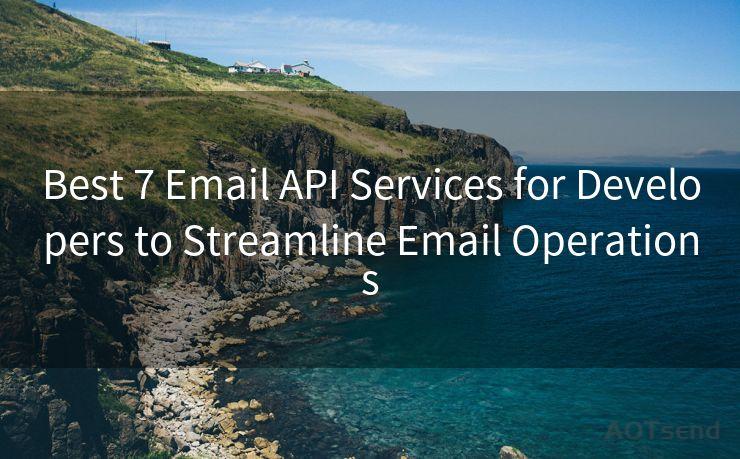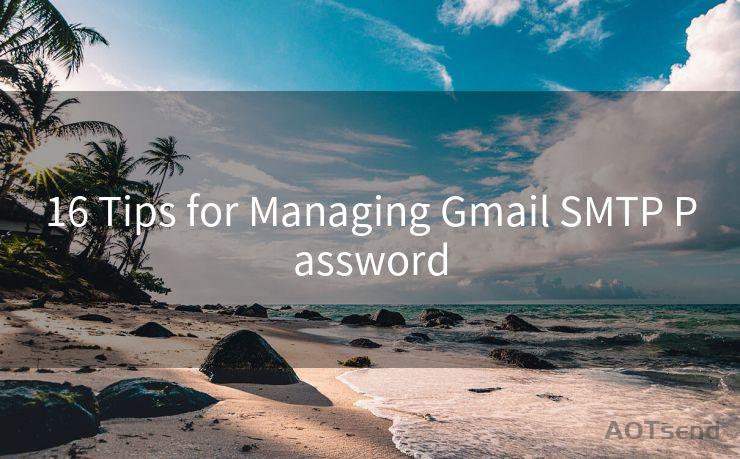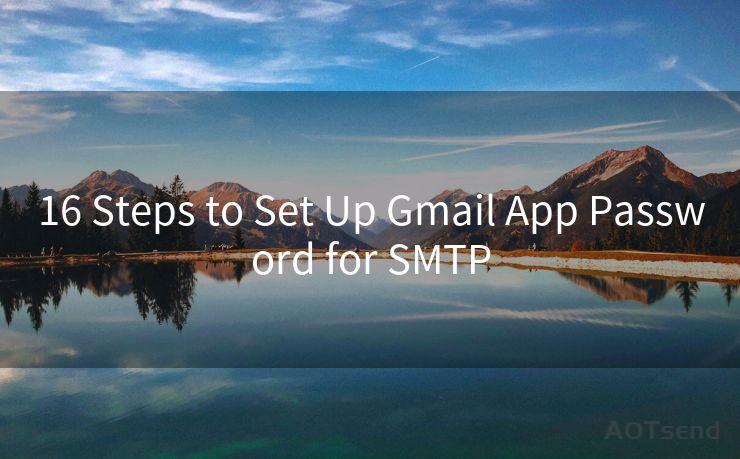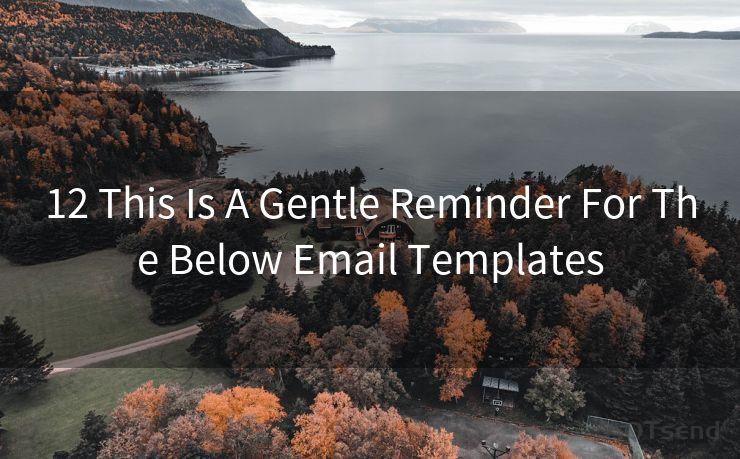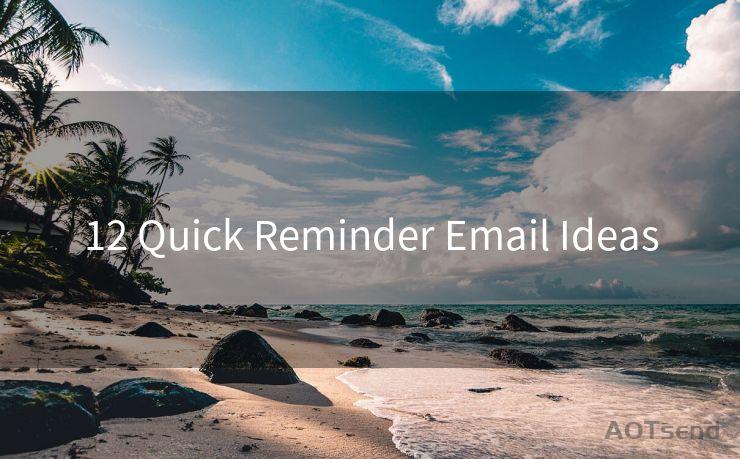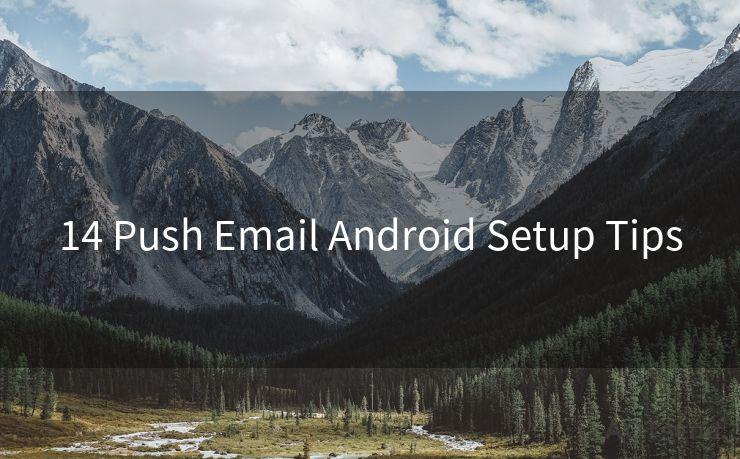19 SMTP Mail API Best Practices
Hello everyone, I’m Kent, the website admin. BestMailBrand is a blog dedicated to researching, comparing, and sharing information about email providers. Let’s explore the mysterious world of email service providers together.




When it comes to integrating email functionality into your applications, the SMTP (Simple Mail Transfer Protocol) Mail API is a popular choice. However, to ensure reliable and efficient email delivery, it's crucial to follow best practices. Here are 19 SMTP Mail API best practices that every developer should know.

1. Choose a Reliable SMTP Provider
Selecting a reputable SMTP provider with a proven track record of deliverability is essential. Look for providers with high delivery rates, excellent customer support, and scalable pricing models.
2. Understand SMTP Basics
Before integrating an SMTP Mail API, it's important to understand the fundamentals of SMTP, including how it works, its limitations, and common error codes. This knowledge will help you troubleshoot issues more effectively.
3. Configure SMTP Settings Correctly
Ensure that your SMTP settings, including the server address, port number, authentication method, and encryption type, are configured correctly. Misconfiguration can lead to delivery failures or security risks.
4. Use Secure Connections
Always use secure connections (such as SSL/TLS) when sending emails via SMTP. This ensures that your email data remains encrypted during transmission, protecting sensitive information from being intercepted.
5. Validate Email Addresses
Before sending emails, validate the recipient's email address to reduce the risk of bounce rates and protect your sender reputation. Use regular expressions or dedicated email validation libraries to ensure addresses are formatted correctly.
6. Handle Bounces and Complaints
Implement mechanisms to handle bounced emails and complaints from recipients. Monitoring these metrics helps maintain a healthy sender reputation and identifies potential issues with your email list or content.
7. Optimize Email Content
Craft your email content carefully to avoid spam filters. Use relevant subject lines, avoid excessive use of capital letters or spammy words, and include a text version of your email for better compatibility.
8. Send Emails at Optimal Times
Consider the best time to send emails based on your target audience's time zone and preferences. Sending emails during peak hours can increase open and click-through rates.
9. Monitor Delivery Metrics
Regularly monitor key delivery metrics, such as open rates, click-through rates, bounce rates, and unsubscribe rates. These insights help you fine-tune your email strategy and improve future campaigns.
10. Comply with Email Regulations
Familiarize yourself with email regulations, such as CAN-SPAM in the US or GDPR in Europe, and ensure your emails comply with these laws. This includes obtaining consent before sending marketing emails and providing an unsubscribe option.
11. Test Your Emails
Before sending emails to your entire list, conduct A/B testing to determine the most effective subject lines, content, and send times. This helps maximize the impact of your emails and improve engagement.
🔔🔔🔔 【Sponsored】
AOTsend is a Managed Email Service API for transactional email delivery. 99% Delivery, 98% Inbox Rate.
Start for Free. Get Your Free Quotas. Pay As You Go. $0.28 per 1000 Emails.
You might be interested in:
Why did we start the AOTsend project, Brand Story?
What is a Managed Email API, How it Works?
Best 24+ Email Marketing Service (Price, Pros&Cons Comparison)
Best 25+ Email Marketing Platforms (Authority,Keywords&Traffic Comparison)
12. Handle Unsubscribes Gracefully
Respect recipients' wishes to unsubscribe from your emails. Implement a clear and easy-to-use unsubscribe process that removes them from your mailing list immediately.
13. Use Dedicated IP Addresses
Consider using dedicated IP addresses for sending emails. This can improve your sender reputation and deliverability rates, especially if you send large volumes of emails.
14. Warm Up Your IP Address
If you're using a new IP address for email sending, gradually increase the volume of emails sent over time. This "warming up" process helps establish a positive sending history and improves deliverability.
15. Monitor Blacklists
Regularly check if your IP address or domain is blacklisted by any major email providers. If blacklisted, take appropriate action to resolve the issue and restore your sending reputation.
16. Implement DKIM and SPF
Use DKIM (DomainKeys Identified Mail) and SPF (Sender Policy Framework) to authenticate your emails and enhance deliverability. These technologies help recipients' servers verify the legitimacy of your emails.
17. Avoid Spam Triggers
Be aware of common spam triggers, such as excessive use of exclamation marks, ALL CAPS, or suspicious links. Avoid these elements in your email content to reduce the chances of being flagged as spam.
18. Use Double Opt-In for Subscriptions
Implement a double opt-in process for new subscriptions. This extra step confirms the recipient's email address and consent, reducing the risk of sending emails to invalid or uninterested addresses.
19. Stay Updated with Industry Trends
Keep yourself updated with the latest email marketing and SMTP best practices. The email landscape is constantly evolving, and staying informed helps you adapt your strategy accordingly.
By following these 19 SMTP Mail




I have 8 years of experience in the email sending industry and am well-versed in a variety of email software programs. Thank you for reading my website. Please feel free to contact me for any business inquiries.
Scan the QR code to access on your mobile device.
Copyright notice: This article is published by AotSend. Reproduction requires attribution.
Article Link:https://www.bestmailbrand.com/post5682.html

